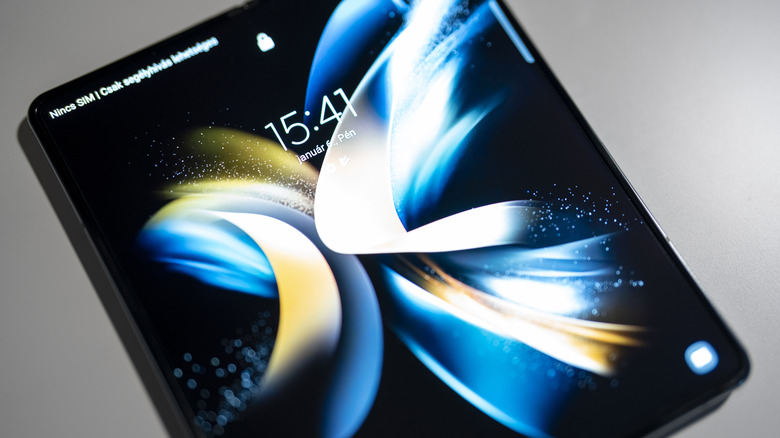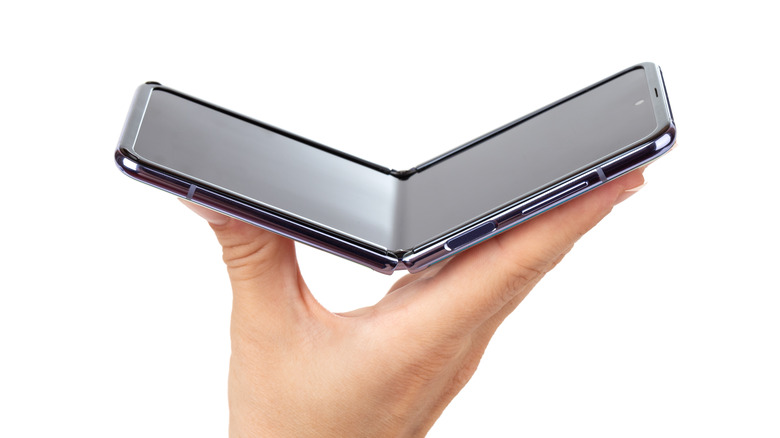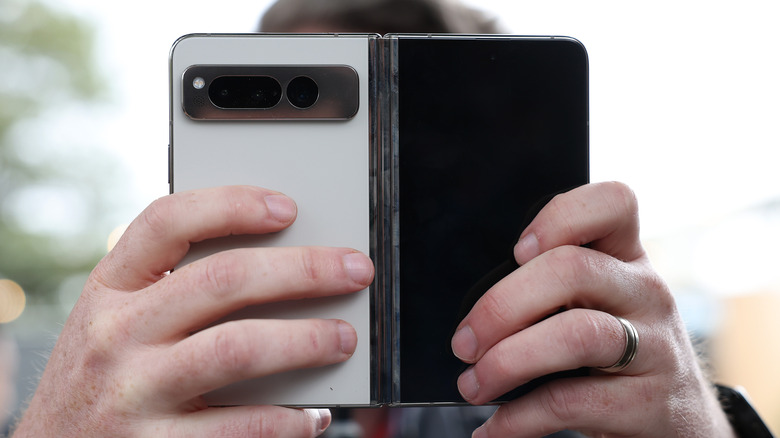Should You Buy A Foldable Android Phone? Pros And Cons
Since the release of the Royole FlexiPai in 2018, foldable phones have slowly but surely made their way into the mainstream market. Samsung turned heads with its first release in 2019, and Motorola joined the fray in 2020. These early days, though exciting, were admittedly plagued by delays and usability issues. However, now that the industry has five years of experience under its belt, the technology behind the foldable phone has come a long way — or has it?
While the releases keep coming, including the first Google foldable phone that's due to ship in June 2023, many users remain unsure about this particular brand of smartphone tech. For some, it's not much more than a gimmick, and for others the idea is interesting but the technology isn't quite there yet. One thing's for sure, foldable phones are a gadget that comes with both significant pros and significant cons. Here are some of the most important things to think about.
The pros of foldable phones
The most obvious pro of a foldable Android phone is the screen size. Many models boast screens of up to 7.6 inches, which is more than enough room to watch movies or play video games without squinting. It also opens the way for true on-the-go productivity, allowing full view of documents and spreadsheets — a task that can be quite frustrating on a normal smartphone screen. When you don't need all that screen real estate, you can simply use the outer screen instead for quick access to all your apps.
Foldable phones aren't just for big-screen enthusiasts, though — they can also appeal to fans of compact gadgets. Models in the Samsung Flip series, for example, take a normal-sized smartphone and allow you to simply fold it in half. There's usually an outside screen to keep you up to date on your notifications and complete simple tasks such as taking a photo or interacting with widgets, and it can fit into much smaller pockets than a standard smartphone.
There are also other perks, like the ability to sit the phone on a surface like a laptop and watch videos hands-free, or having access to a much larger on-screen keyboard. It's also worth mentioning that folding-screen tech just looks cool, and the excitement of participating in a new genre of tech is a perk in itself for a lot of people.
The cons of foldable phones
For many people, phones are not toys but practical necessities, and it's undeniable that foldable phones aren't quite as sturdy and reliable as their non-folding counterparts. If you visit the Galaxy Z Flip subreddit, you'll find examples such as one user lamenting issues with the phone's screen along the crease. As flexible as the ultra-thin glass is, the folding display and its hinge add two new points of failure to this type of device. They may not fail often, but it's still something that's worth thinking about if you're considering a purchase. The technology is also having a harder time catching up to industry standards of water and dust resistance, which affects their longevity.
The other major drawback of current foldable models is, of course, the price. The new Google Pixel Fold costs an incredible $1,799 and the Samsung Fold 4 costs exactly the same. These prices knock any and all models of iPhones right out of the water and even exceed the iPhone 14 Pro Max with 1TB of storage. Whether the price is justified or not, it's far too high for many consumers to even consider, and this reality is what continues to keep foldable phones from securing real mainstream popularity.
While the pros are tantalizing in principle, the arguments against foldable phones remain enough to keep most users away at the moment. However, if new tech excites you and you don't mind the possibility of running into issues, some of the newer foldables can be worth buying — as long as you do your research beforehand.


